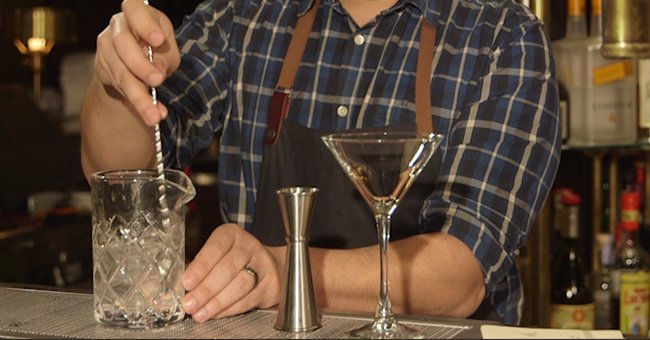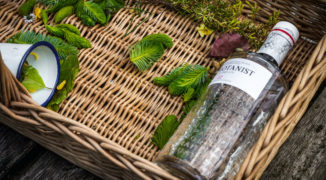If you’re looking for that perfect gin martini, leave the shaker. Bust out the bar spoon.
It’s not just high and mighty mixologists looking down upon you in judgment when you fill that shaker full of ice and promptly start rattling. The high velocities you keep subjecting your gin to can actually have a negative impact on all those wonderful subtleties that give gin-based cocktails their backbone.
Breathing and bruising? They aren’t just buzzwords. There are organic compounds in your gin that can go sideways when you subject them to the hardcore rock tumbler of your cocktail shaker. (In this case, when we say “organic,” we mean compounds composed of carbon, hydrogen, oxygen, and the other odd elements.)
To dig down into the science of why your gin is best served stirred, not shaken, we turn to Shannon Stewart, a research scientist at Massachusetts Institute of Technology and an avid gin drinker.
“Any complex mixture of odors is generally divided into three parts: top note (in perfumes this is also known as the head note), middle note (heart note) and base note or fixative,” Stewart said.
The corresponding physical/chemical characteristic is vapor pressure (sometimes expressed as volatility). Top notes are the most volatile, while the base notes are the least volatile.
“Imagine the odor being contained by a piston,” Stewart said. “The more the odor wants to evaporate and escape, the harder the piston has to work to contain it.”
The base notes in the gin can actually work to temper those top notes, bringing them down and making them more palatable. Stewart pointed to red wine. In red wines, top notes can sometimes be terrible and offensive. These notes may contain sulfuric or amine groups that generally evoke the sensation of spoilage.
This is why some red wines have to breathe before you can serve them. It’s the same theory behind aerators or decanters — increasing the surface area of your wine that comes into the contact with the air, giving those volatile top notes a chance to dissipate.
In gin, the most distinct and attractive notes are the lovely juniper and coriander. It’s what makes gin so enticing.
“This is the top note,” Stewart said. “And the quality of juniper actually doesn’t come from a single compound, but rather a mix of lightweight alcohols.”
So when you agitate gin — say by shaking it for a martini — you’re causing the top notes to dissipate. Those bits of pine and botanicals that you look forward to start breaking down and become dull. The end result: A cocktail that’s nowhere near as crisp as it should be.
“This is what we call bruising,” Stewart said. “Once you’ve shaken it, the rest of the drink only contains middle and base notes. Yuck.”
So, how do you keep these flavors and notes intact, while still getting that desirable deep freeze? Lots of ice, lots of stirring, and a properly prepared glass.
If you’re mixing a drink that traditionally needs to be shaken, but you really want to use your favorite gin, bust out the bar spoon and get ready to make your arm tired. Unless you really beat the heck out of it and create a massive vortex that exposes the gin to even more air, you’re not going to be exerting enough force on the gin to start breaking up the top notes of flavor. That means you should (reasonably) stir away until you get a bit of frost on the outside of your shaker, then pour.
The good news for you vodka drinkers — unless you’re rocking flavored vodka, there really isn’t much of a top or middle note. So feel free to shake away.





